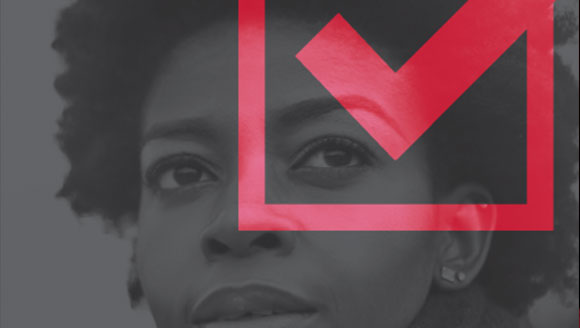The High Cost of Not Voting: Voter Suppression and the Racial Income Gap
Like so much else in the United States, voting is strongly correlated with income [1]. Conventional wisdom might assume that individuals experiencing economic hardship would be more inclined to get involved in the political process—if only to ameliorate their day-to-day economic concerns, but a report by the Scholars Strategy Network[2] finds that citizens who vote tend to have higher incomes. Unemployment, poverty and economic insecurity has as much an effect on suppressing voter participation as draconian voter ID laws and poll closings. The intentional—or unintentional—consequence of our nation’s stubborn racial income gap is the loss of a lever of power for low-income communities to lift themselves from poverty by electing politicians or pressuring incumbents to address their specific needs and improve their access to opportunity.
The 2016 Survey of Consumer Finances [3] enumerates America’s racial wealth gap in troubling detail. According to the survey, white families had a median net worth of $171,000 compared to $17,600 for Black families. Between 2013 and 2016, the white-Black gap in median net worth increased 16 percent from $132,800 to $153,400. Sociologists, political scientists and economists have studied the issue of white-Black economic inequality for years. It has been the focus of media attention and a major economic concern of Black families for decades. If Americans facing economic adversity voted based on income and financial circumstances, they could elect politicians committed to passing laws that would increase wages, provide equal opportunities for educational advancement and pass meaningful and efficient regulations that would improve their quality of life. Most Americans realize the importance of these issues and recognize that voting can play a role in improving them. However, voter turnout varies based on a number of socioeconomic factors.
In 2012, the voting rate for non-Hispanic Blacks was 66.6 percent compared to 64.1 percent for non-Hispanic whites. However, in 2016, voter turnout increased to 65.2 percent for non-Hispanic whites but decreased to 59.6 percent for non-Hispanic Blacks[4]. In terms of education, those with a high school education or more had a voter turnout of 77 percent, compared to 44 percent for those with a high school diploma or less. The voter turnout was 69 percent for those whose family income was more than $50,000, compared with 50 percent for those whose family income was less than $50,000[5]. According to the United States Elections Project (USEP),[6] in 2016, the voting eligible population was 230.6 million. Of those, 138.6 million (60.1 percent) citizens voted and 92 million did not. Why did 92 million eligible Americans not exercise their right to vote during the 2016 presidential election[7]?
The answer lies in political interest, personal motivation and, oftentimes, ability.
For low-income earners and those who face economic adversity, the cost of voting can be too high a social and financial barrier to scale. Political science researcher, Steven J. Rosenstone (1982), suggests that economic adversity increases the opportunity costs of civic participation—including voting—and reduces a person’s capacity to engage in politics, giving birth to a vicious cycle of neglect and poverty. Political participation, which can include contributing money to political campaigns, running for public office, voting and protesting, are methods afforded to all citizens to communicate their needs, interests and preferences and generate pressure on politicians to respond[8]. However, because some forms of political participation in the United States are so tied to income, elected officials will inevitably pay more attention to the needs and policy preferences of affluent voters[9], leaving the most vulnerable with the least political representation, further contributing to the income and opportunity gap, breeding an economic adversity voting paradox.
It has been well established in the literature on voting that racially biased voter suppression tactics, such as improper voter purges, early voting cutbacks, restrictive voter ID requirements, the closing of polling locations in Black neighborhoods and restrictions on student voting disproportionately impacts Black and low-income communities. Because race and poverty are also historically linked in this country, time-worn, race-based strategies that make it difficult for Black people to vote make them especially vulnerable to economic inequality. These kinds of laws and policies are particularly burdensome for voters who are anxious about keeping a roof over their head, missing a car note or feeding a family.
Voting is out of reach for those who do not have a permanent address—they will likely not have an approved form of ID to vote in states that require identification, and the cost of obtaining an ID can be a legitimate hurdle for some. Elections are held on a work day; for people who work at jobs without paid leave, taking time off work is a heavy financial burden. A wealth of studies show that it takes longer to vote in poor areas. For hourly workers, voting can become synonymous with lost wages. Finding reliable or affordable transportation to polling sites is often noted as a deterrent to voting. From single-parents who have child care scheduling to contend with to students with full class and work loads, these structural roadblocks to the voting franchise work to suppress the vote.
Voting – often considered the most fundamental right in the United States – is a way for American citizens to have their voices heard. Unfortunately, those with the greatest need are least likely to be heard from due to a combination of economic adversity and voter suppression tactics that decrease voter turnout. Therefore, increasing voter turnout among low-income minority voters must go hand-in-hand with decreasing economic inequality, increasing political engagement, and eliminating all forms of voter suppression. Citizens who struggle with the challenges of entrenched economic adversity pay a high price for their inability to participate in the very political process that can offer remedies to alleviate income inequality.
[1] Verba, Sidney, Kay Lehman Schlozman, and Henry E. Brady. (1995). Voice and Equality: Civic Voluntarism in American Politics. Cambridge: Harvard University Press.
[2] Franko, William W., Kelly, Nathan J., and Witko, Christopher. “How Roadblocks to Voting Make Income Inequality Worse” Scholars Strategy Network. (January 15, 2014).
[3] Board of Governors of the Federal Reserve System. 2016 Survey of Consumer Finances (SCF).
[4] File, Thom. (2017). “Voting in America: A Look at the 2016 Presidential Election.” United States Census Bureau.
[5] MIT Election Data. Voter Turnout. Available at: https://electionlab.mit.edu/research/voter-turnout
[6] McDonald, Michael. United States Elections Project. “2016 November General Election Turnout Rates” (September 5, 2018)
[7] United States Elections Project, “2016 November General Election Turnout Rates,” available at: http://www.electproject.org/2016g
[8] Rosenstone, Steven, J. “Economic Adversity and Voter Turnout.” American Journal of Political Science (1982): 25-46
[9] Ibid Franko


 Equality Index
Equality Index  Senate Report
Senate Report  2020 SOBA Essays
2020 SOBA Essays  2019 Report
2019 Report 